Abstract
1. A preparation is described whereby the responses of the two anococcygeus muscles can be recorded in vivo in the pithed rat and the autonomic outflows to the muscle selectively stimulated in the spinal canal.
2. Motor responses are obtained from stimulation at two levels; an upper extending from T 11 to L 3 and a lower from L 6 to S 2. Stimulation between these levels, i.e. between L 3 and L 6, produces no response. The response to stimulation at both upper and lower levels is abolished by phentolamine. The response to stimulation in the upper region is abolished by hexamethonium and is, therefore, presumably preganglionic; the response to stimulation at the lower level is resistant to hexamethonium and presumably post-ganglionic. Stimulation at levels above T 11 causes contraction after a delay, by liberating catecholamines from the adrenal medulla. This effect is blocked by both phentolamine and hexamethonium.
3. If the adrenergic motor nerves are blocked and the muscle tone raised by a combination of guanethidine and tyramine, stimulation between L 5 and S 2 produces inhibition. The inhibitory outflow, therefore, overlaps the motor outflow but extends one segment more rostral (L 5). Stimulation restricted to this L 5 segment even in the presence of a normal unblocked motor innervation causes inhibition. The inhibitory response is blocked by hexamethonium or mecamylamine but desensitization and `escape' occurs. This desensitization is less than that observed in the vas deferens when its motor nerves are similarly stimulated in the spinal cord.
4. It is concluded that inhibitory fibres to the anococcygeus arise in the spinal cord and are organized in the pattern of the autonomic nervous system with a peripheral synapse. The site of origin of these inhibitory fibres is different from the motor adrenergic fibres to the muscle.
Full text
PDF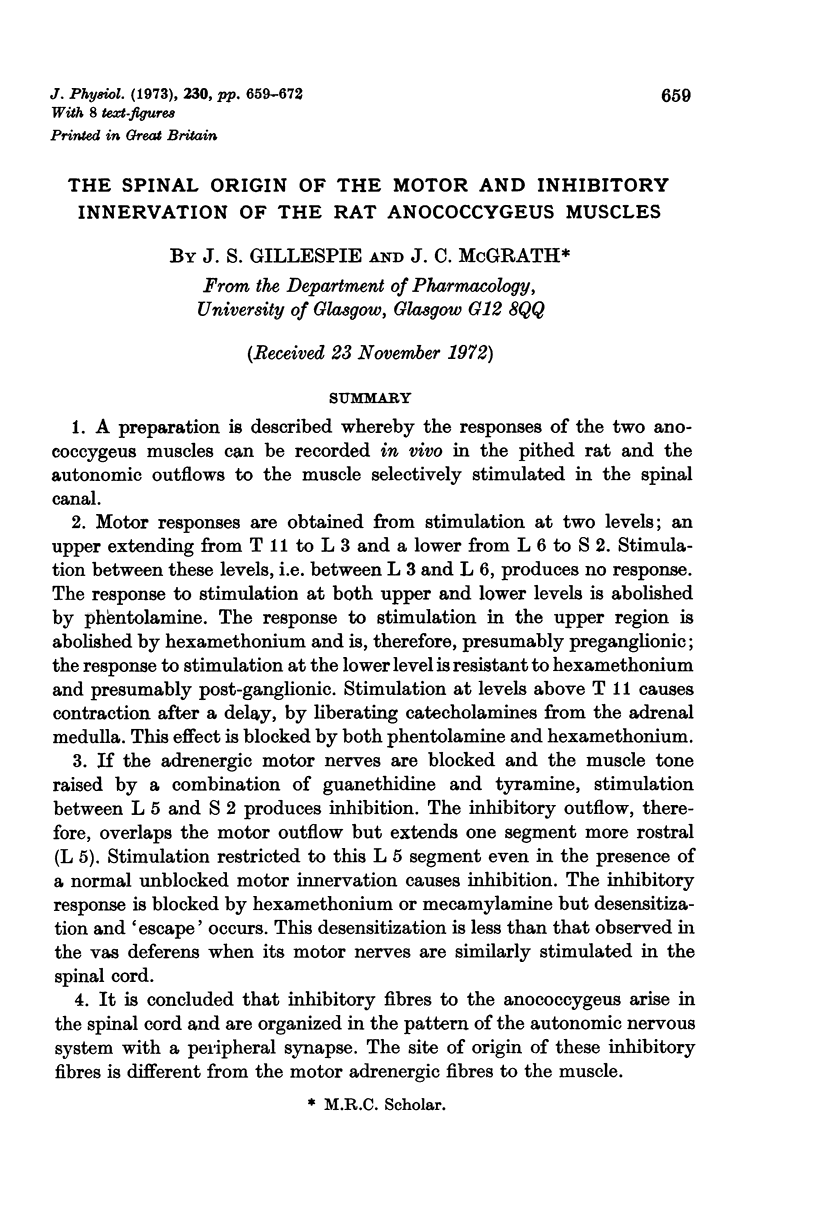
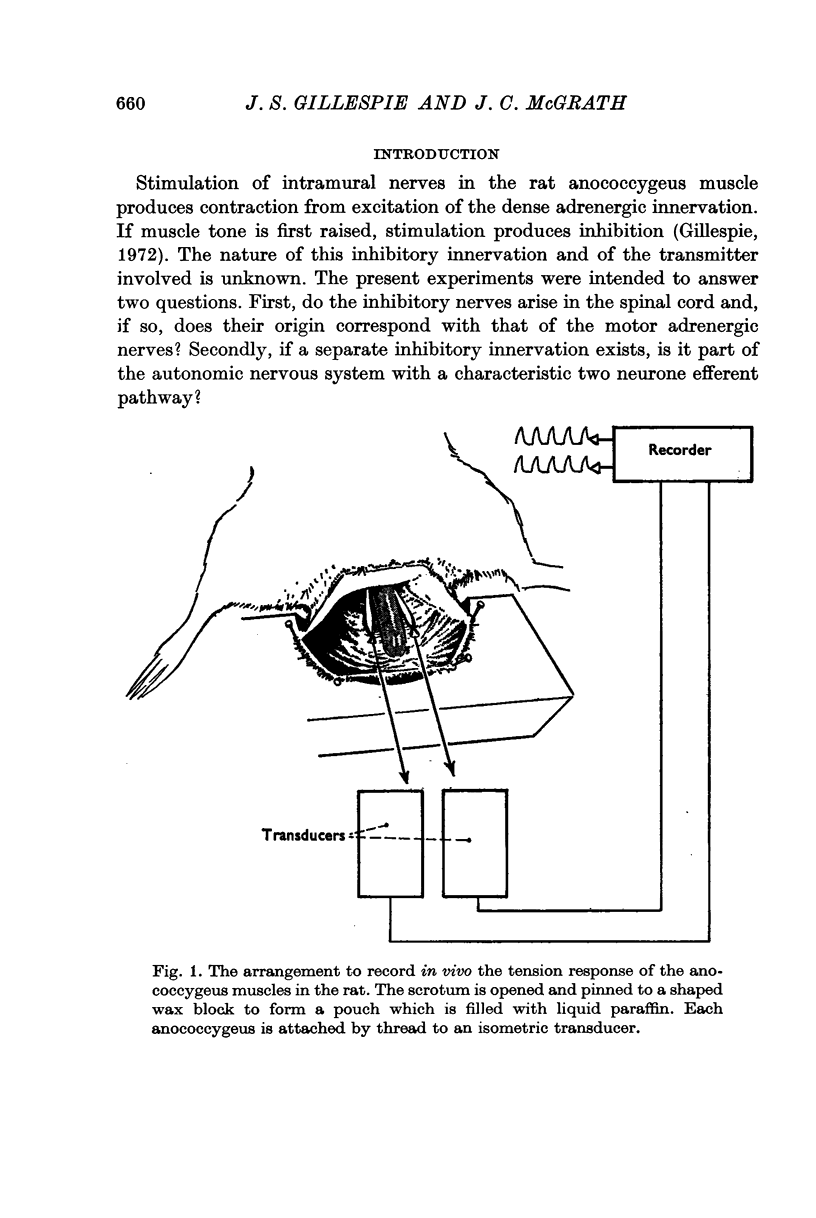
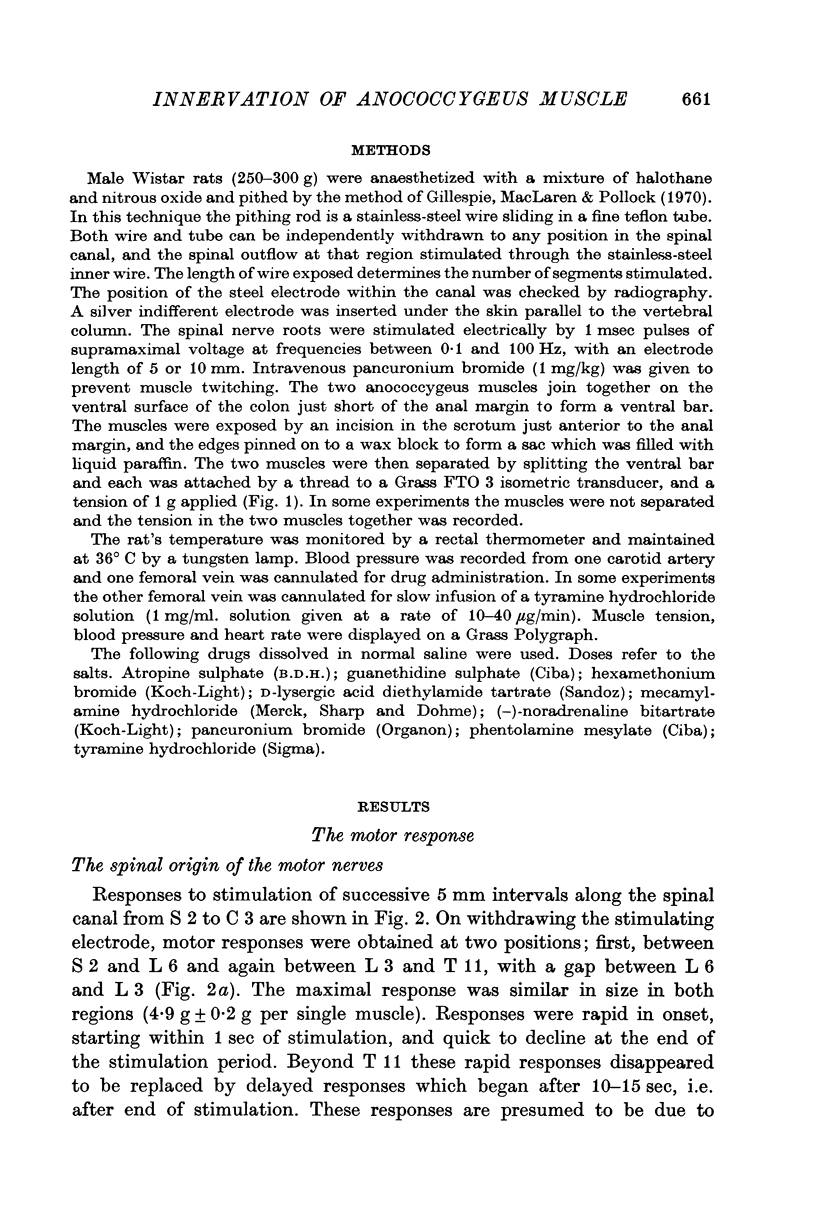
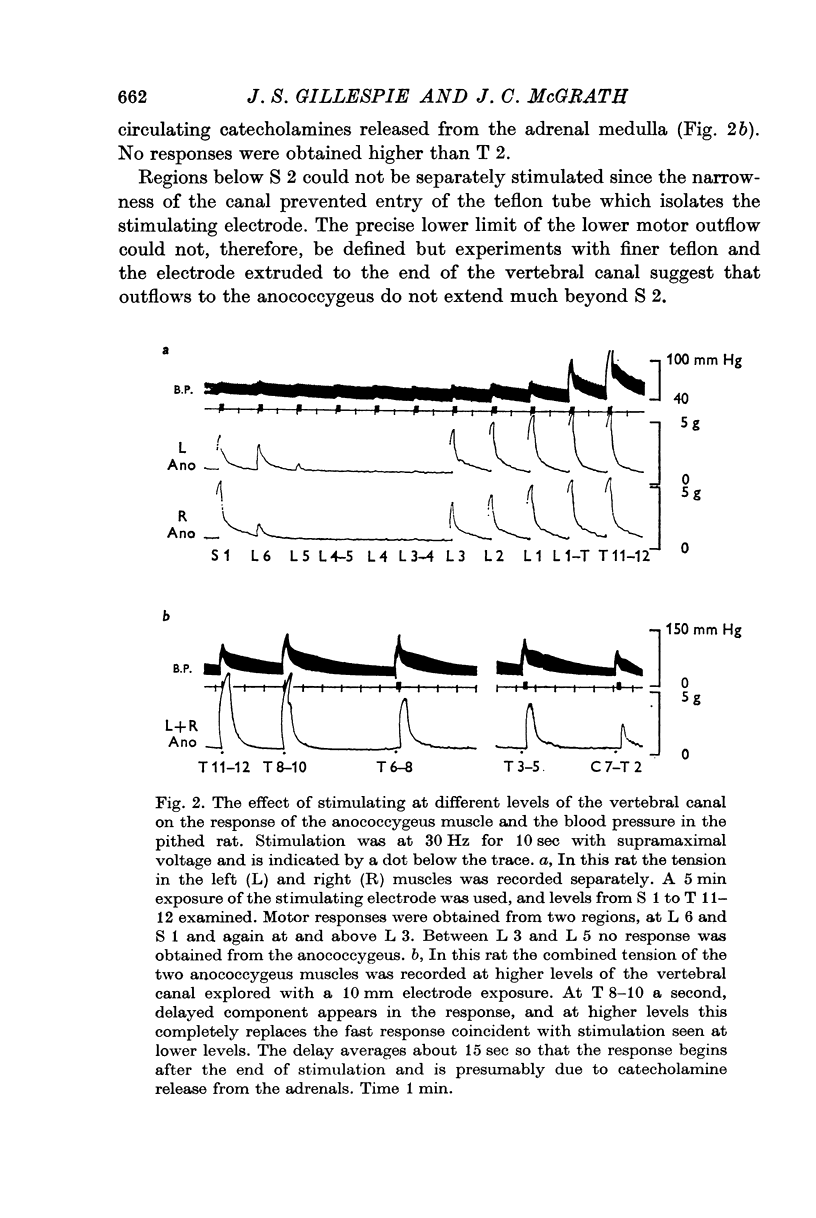
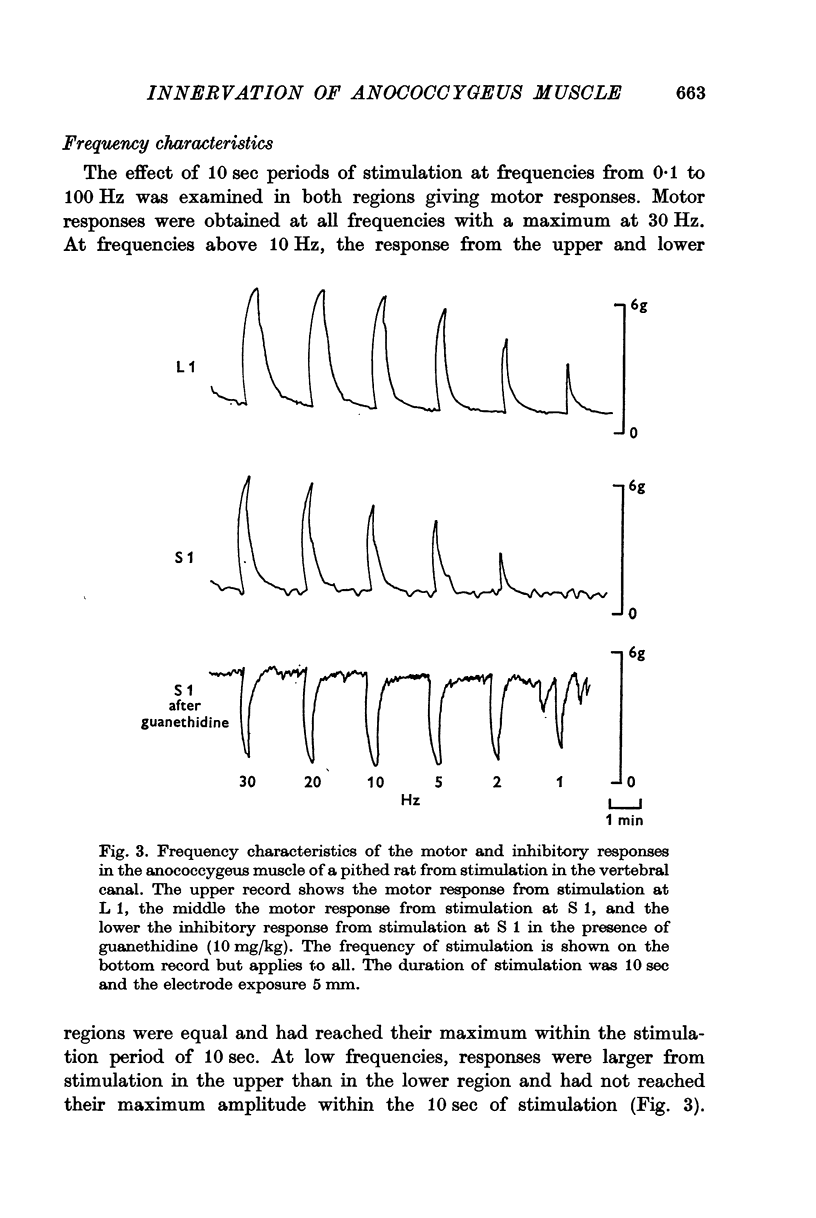
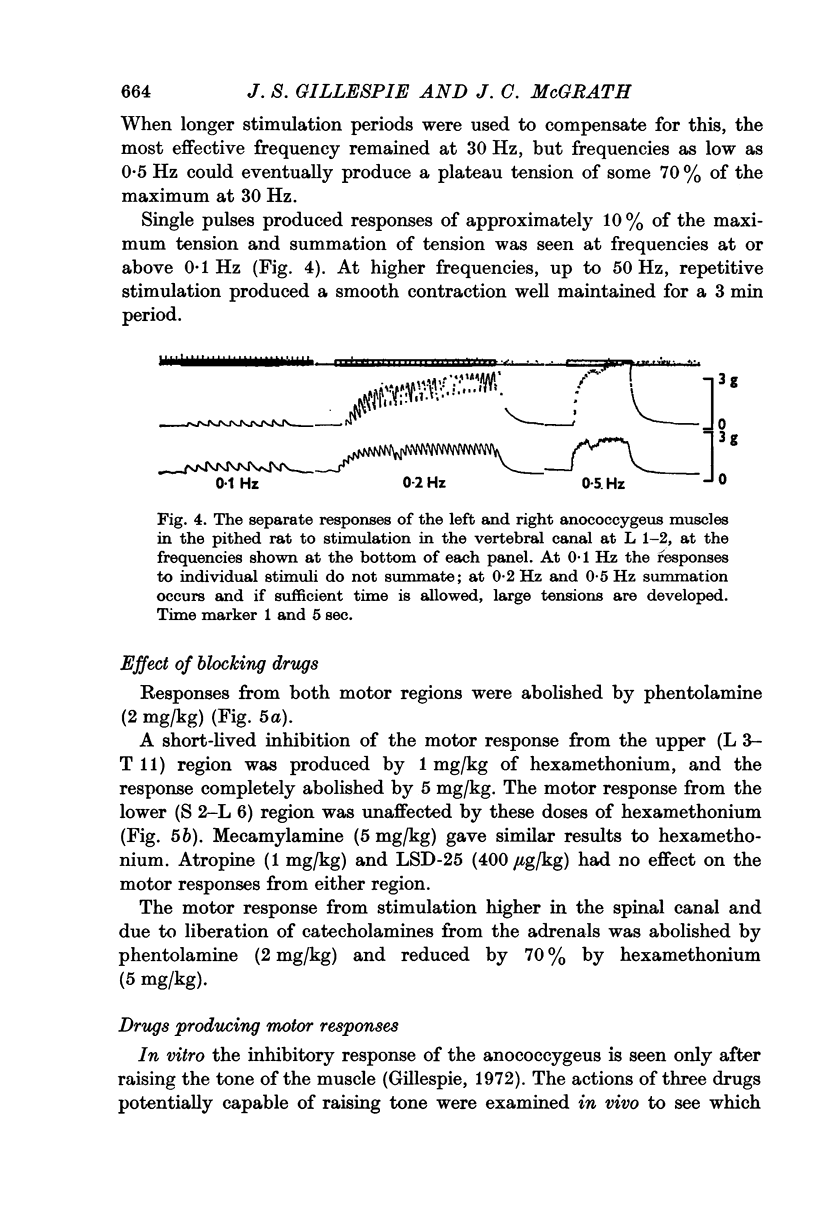
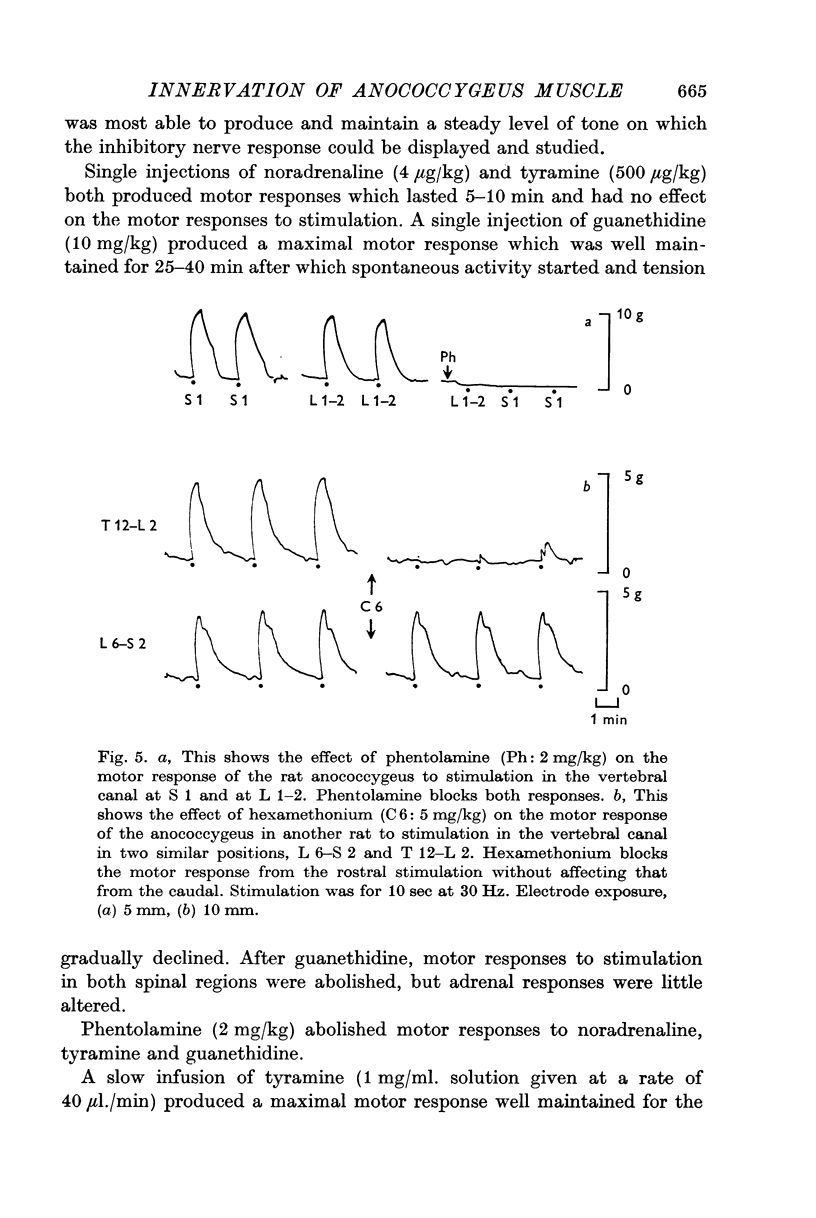
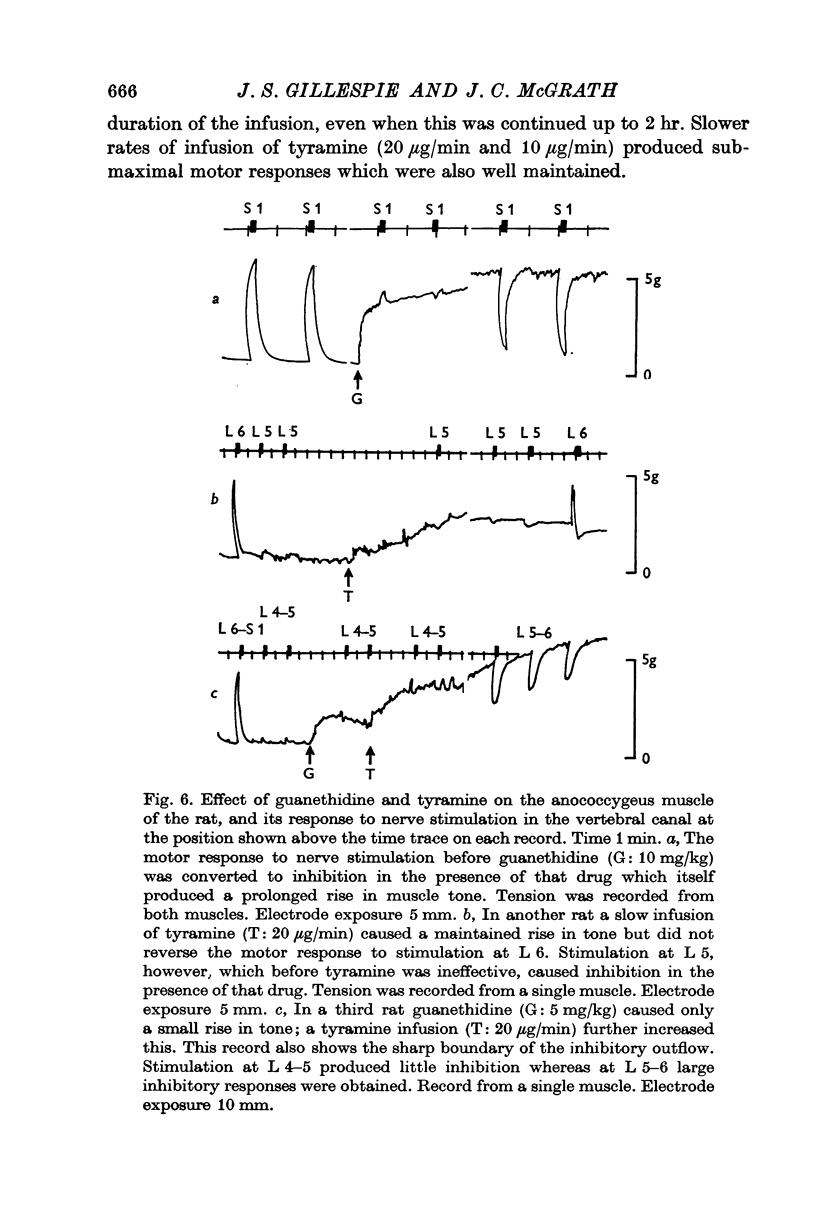
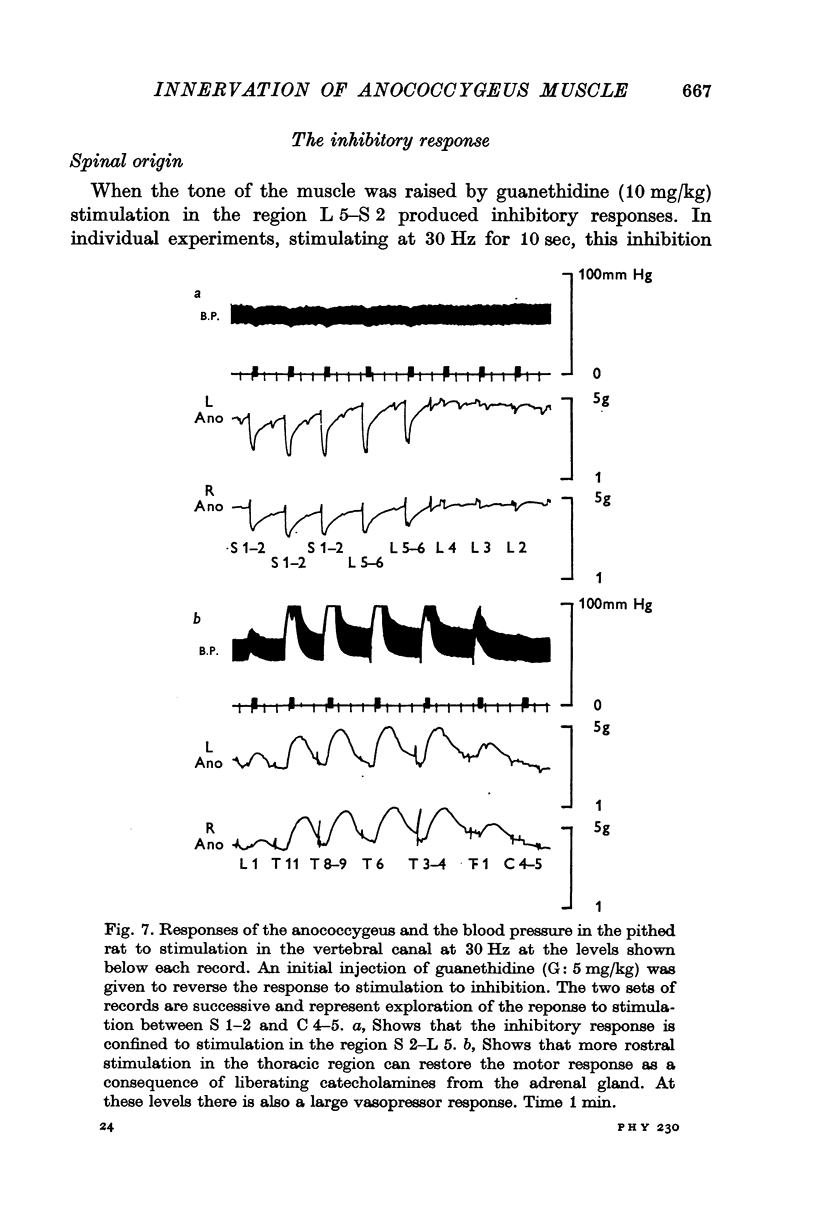
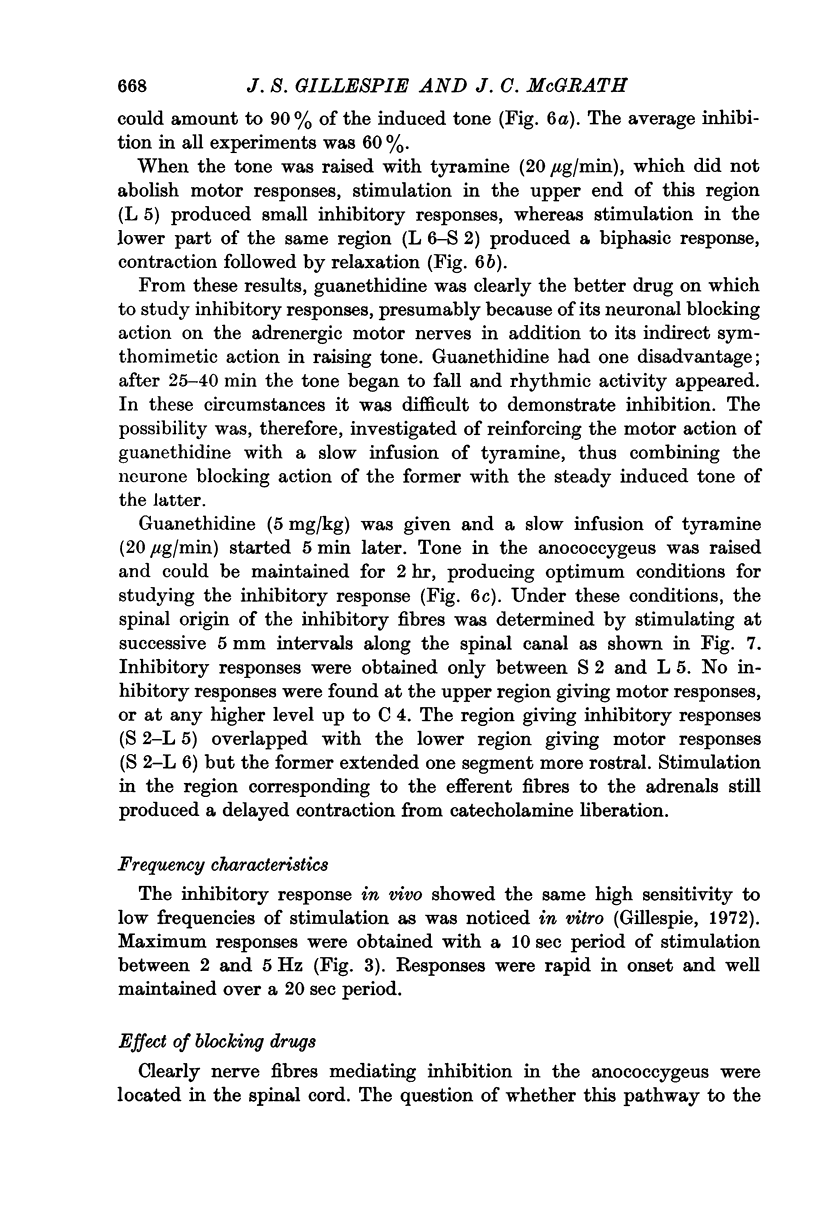
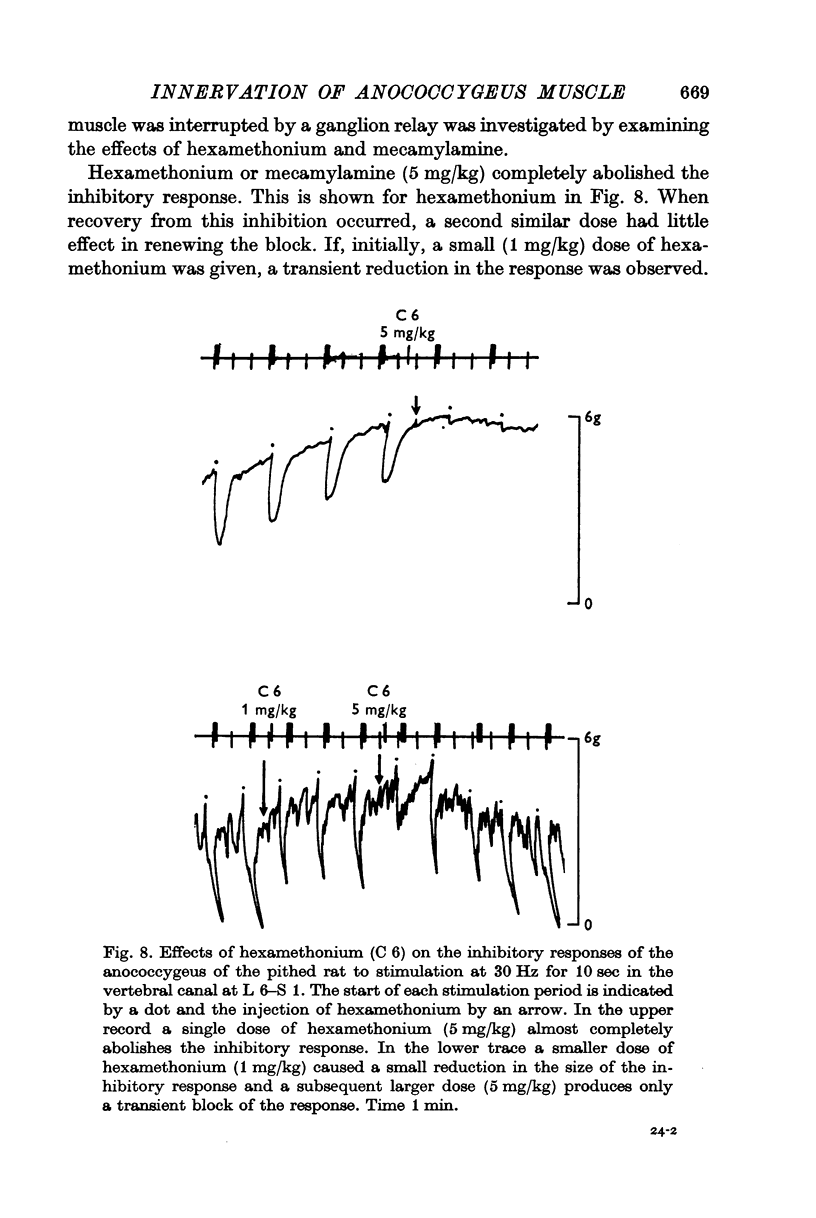
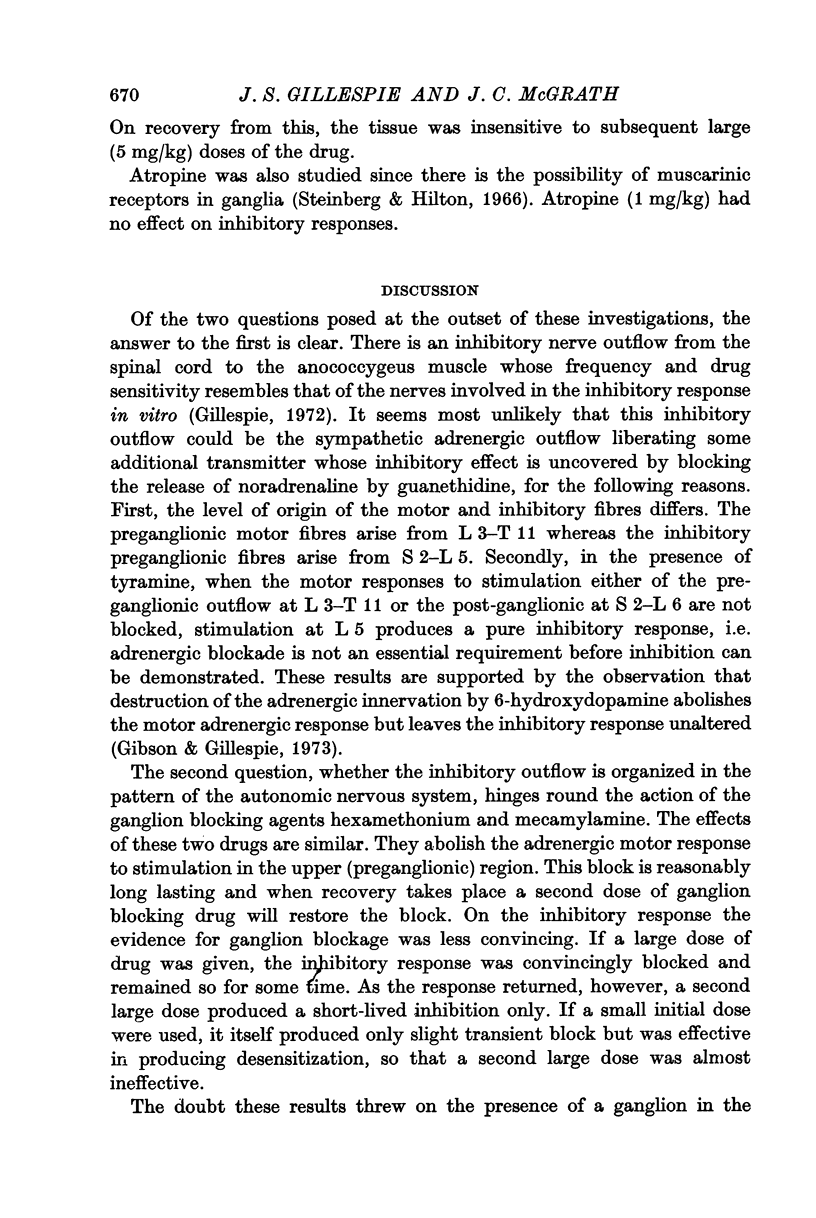
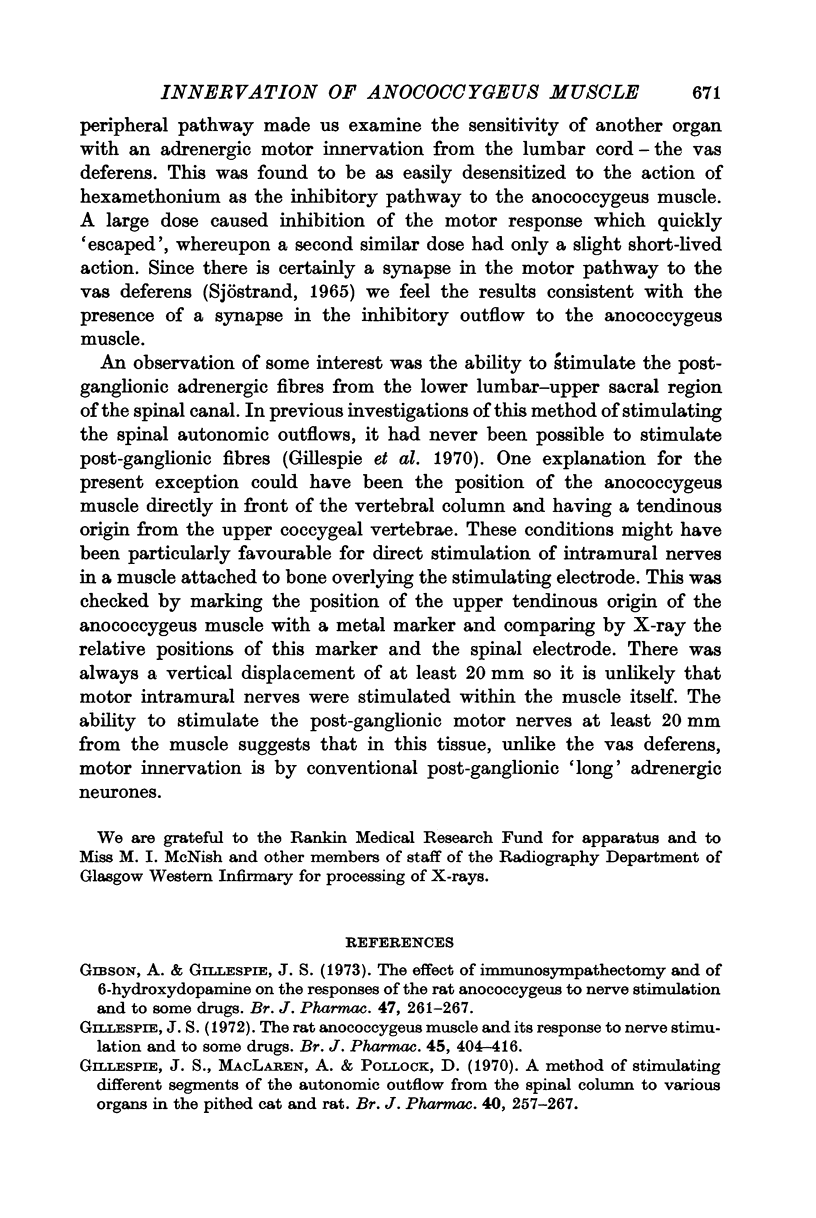
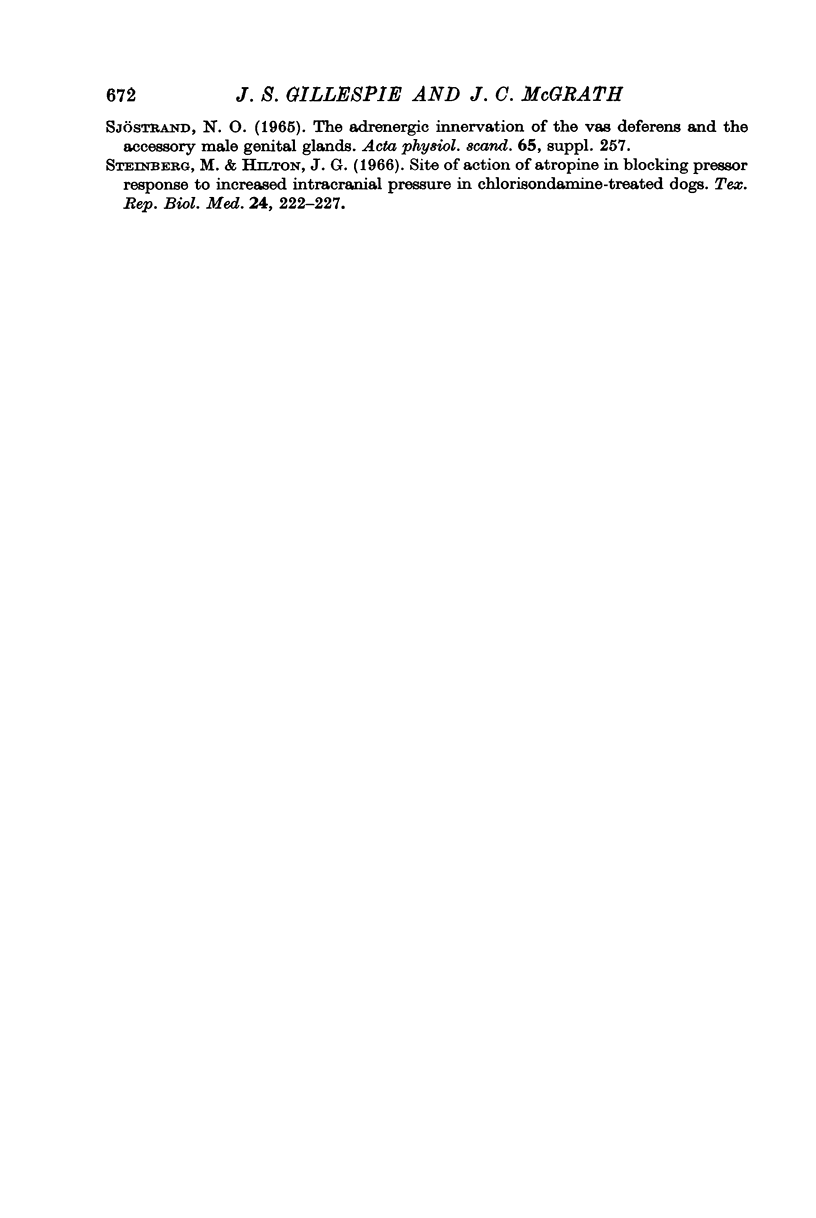
Selected References
These references are in PubMed. This may not be the complete list of references from this article.
- Gibson A., Gillespie J. S. The effect of immunosympathectomy and of 6-hydroxydopamine on the responses of the rat anococcygeus to nerve stimulation and to some drugs. Br J Pharmacol. 1973 Feb;47(2):261–267. doi: 10.1111/j.1476-5381.1973.tb08323.x. [DOI] [PMC free article] [PubMed] [Google Scholar]
- Gillespie J. S., Maclaren A., Pollock D. A method of stimulating different segments of the autonomic outflow from the spinal column to various organs in the pithed cat and rat. Br J Pharmacol. 1970 Oct;40(2):257–267. doi: 10.1111/j.1476-5381.1970.tb09919.x. [DOI] [PMC free article] [PubMed] [Google Scholar]
- Steinberg M., Hilton J. G. Site of action of atropine in blocking pressor response to increased intracranial pressure in chlorisondamine-treated dogs. Tex Rep Biol Med. 1966 Summer;24(2):222–227. [PubMed] [Google Scholar]


